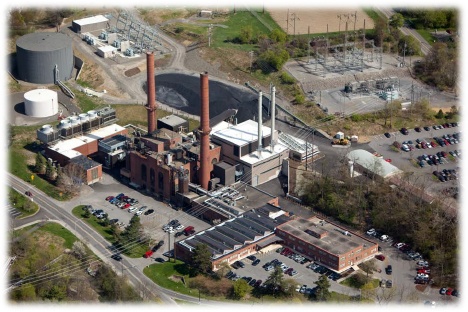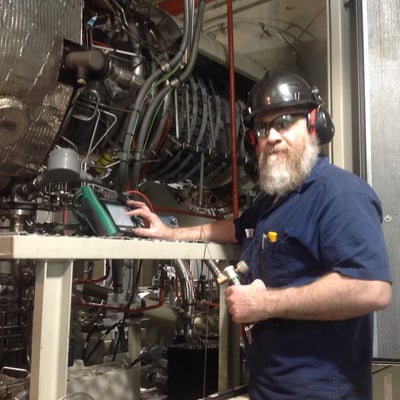SO FAR, WE’VE AT LEAST CUT THE TIME IN HALF FOR MOST CALIBRATIONS AND SEEN THE BIGGEST DIFFERENCE WITH TEMPERATURE CALIBRATIONS. WE’VE CUT THE TIME IT TAKES TO PERFORM THOSE BY TWO-THIRDS.
[fa icon="quote-right"]
The Maintenance Team
Kristopher Welfel, Senior Instrument and Control (I&C) technician, has worked in the maintenance field for over 20 years. Currently, Kristopher, alongside a team of three additional I&C techs, maintains the 1,000+ primarily analog and HART transmitters and controls, including pressure, temperature, flow, differential pressure, level and switches, located throughout the CEP. Approximately 300 of the instruments are classified as critical and require documented calibration.
Not only is the group responsible for maintenance, but they are also responsible for commissioning. Last year, two new boilers were commissioned. Needless to say, this small group stays busy and works hard to execute all assignments in compliance with Cornell’s high standards, known as the triple constraints: safety, reliability and efficiency.
In short, as Kris emphasizes, “I am extremely proud to work for Cornell and proud of the amount of work we execute with our small team. We maintain all the utility buildings with just our group, which is unfathomable to some people. We keep the systems not only running, but reliable, efficient and above all, safe.”
Calibration Then & Now
A few years ago, while attending a training class at the International Society of Automation (ISA), Kris experimented with the Beamex MC6 field calibrator and communicator and temperature blocks. Upon using this advanced technology, he realized that there was an opportunity to utilize more robust solutions to help improve the CEP’s calibration program. Because, at that time, the CEP’s process consisted of an assortment of equipment and technology:
• Handheld calibrator
• Handheld communicator
• Hand pump (pressure calibrations)
• Decade resistance box (temperature calibrations)
• Handheld computer with asset management software
Predominantly due to the amount of single-function equipment that had to be carried, it took 3 to 4 techs to perform a single calibration. As Kris describes, “the calibration wasn’t so hard, it was just all the equipment we had to carry.” Furthermore, these multimanned calibrations were then followed by tedious, manual entry work to get the calibration data, vital for documentation requirements, into the asset management software. The team found this work to be not only time consuming, which was a challenge for a small team already short on time, but also error-prone. Occasionally, calibration data was manually entered under the wrong instrument record, which caused data reliability issues. Keeping in mind the daily challenges at CEP and after experiencing this type of advanced technology while at ISA, upon his return to work,
Kristopher was inspired and motivated to improve their processes. He began by outlining the objectives and specifications:
• Minimize the amount of equipment needed in the field
• Invest in reliable, accurate and easy to use equipment
• Utilize equipment that offers versatile and smart communication capability
• Investigate calibration software to store detailed data and allow for instrument trending
• Eliminate manual entry of data to save time
• Automate the process to reduce the risk of errors
After researching, requesting information, support, and quotations from major vendors, he determined that the Beamex integrated calibration solutions best fit their needs for several reasons:
• Multi-functional, “grab & go” capability of the MC6: calibrator and built-in HART communicator would allow them to take less equipment into the field
• User-friendliness and intuitive nature of the MC6 allowed the technicians to perform basic calibrations without any training.
• CMX calibration software allowed detailed data storage capability and history trending functionality that was not possible in their current asset management software
• Automated data flow of calibration results from the calibrator to CMX would mitigate human error
When Kris presented his case for the new hardware to management, there were glaringly easy-to-see benefits of how an all-in-one, multi-functional, reliable piece of equipment could help the I&C team. However, with an asset management software already in place, they did not immediately understand the need for calibration software. With some effort, he was able to communicate the functionality differences between an asset management software and calibration software. Ultimately, management realized that the existing asset management software was not designed for their calibration needs. There was more value in CMX from the automated data flow to history trending reporting, to calibration certificate generation that an asset management software simply could not offer. As Kris simply articulates, “the hardware is great and it could be used without the calibration software. But, I couldn’t imagine having to manually input the information into the asset management software like we used to. It would be a nightmare.”



